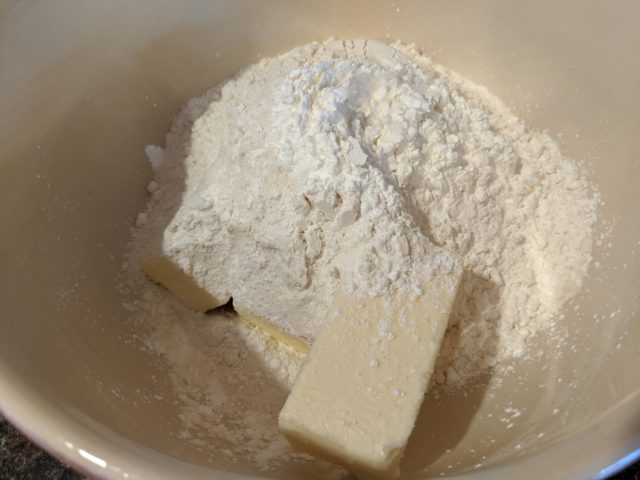It’s Fall and that means it’s time to bake savory biscuits and pastries. Scones are in a category all their own.
I first had this scone at Manresa Bread, a local bakery that makes some of the most outstanding sourdough breads and other yummy bakes. Unfortunately it is not always available, so I did some digging and found the recipe. I love to eat these with a bowl of soup or just on their own. The savory sharpness of the parm and the addition of kale and leeks makes me feel like I’m eating something healthy. These are light and fluffy, owing to the cake flour and the cream. Make sure not to over mix the dough. The chunks of butter also keep it from becoming “claggy” (British for thick and sticky).

KALE PARMESAN SCONES (from Manresa Bread)
2 Tablespoons olive oil
112 grams (~½ cup) sliced leek (the white part)
1 bunch Lacinato kale, ribs removed, and coarsely chopped
340 grams (2 ½ cups) cake flour
1 Tablespoon baking powder
2 teaspoons sugar
2 teaspoons salt
4 ounces (1 stick) unsalted butter, cut into ½ inch chunks
1 to 1 ½ cups of cream or milk
Grated parmesan
Instructions
Sauteé the leeks in 1 Tbsp. olive oil until they are soft, taking care not to let the leeks colour.
Remove from heat and put in a bowl to cool
Add the other Tbsp. of olive oil to the skillet and sautée the kale for about 3-4 minutes just until it begins to wilt
Remove from heat and put in a bowl to cool
Combine all the dry ingredients into the bowl of a standing mixer
Add the butter chunks and mix on low speed until the butter resembles pebbles
Add the kale and leeks, then the parmesan. Mix on low speed until just combined.
Add 1 cup of cream and mix on low just until the dough comes together. Add more cream if needed.
Turn the dough out onto a floured surface and form into a ball.
Then shape into a rectangle about one inch thick.
Cut into 12 triangles.
Place on a baking sheet and bake at 350 degrees for approximately 20 to 25 minutes until lightly golden on the top and bottom.










